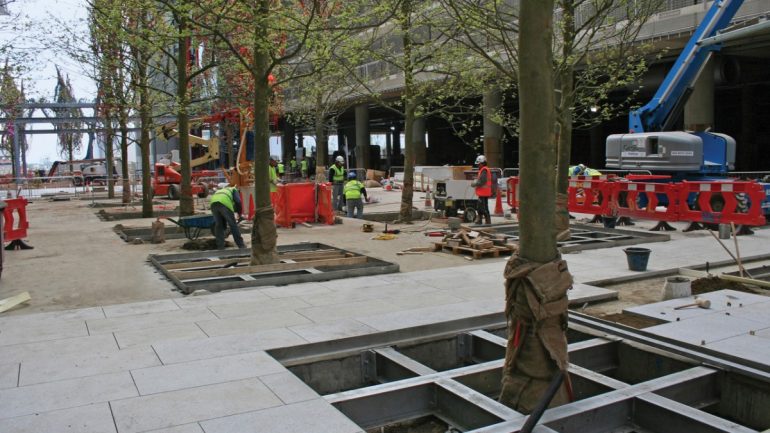The installation of living trees throughout urban areas can enhance environmental quality in a variety of ways. This includes the absorption of noise and pollution, in addition to the production of oxygen and the creation of privacy and land stabilisation. However, the planting of trees in landscaped or paved exterior public spaces can present a number of challenges that must be considered at the very initial design stages.
Chris George, Business Development Manager at Howe Green, discusses the key factors that should be addressed when specifying tree pits and tree grilles for landscaping developments to provide a safe and efficient installation, without compromising on the overall visual effect.
Whilst planting trees in urban areas provide many benefits, any trees or saplings must be initially planted into a safe and secure setting to ensure their long term growth and subsequent environmental advantages. Adequate root management, regular access to water and the maintenance of soil condition are all essential elements that must be considered when incorporating trees into hard landscaped areas.
How can specifiers ensure they’re planted in a safe and secure way? External tree pits and tree grilles are particularly popular with landscaping professionals, as they effectively provide easy access to tree root balls, whilst also providing discreet access to electrics, valves, pumps and water features.
Material matters
When choosing a tree grille or tree pit, ensuring the right materials have been used throughout the product’s construction is critical for preserving the tree’s life and ensuring a long-lasting and durable installation.
Specifiers should consider solutions manufactured from stainless steel, galvanised steel or aluminium, as they provide long-term rust and corrosion resistance to ensure the highest levels of performance, whilst also accommodating a wide variety of hard floor finishes.
The addition of a top edge seal will also prevent dirt, grout or grinding waste ingress to achieve increased longevity and resilience. This also eliminates the requirement for slither cuts of stone, which often leads to recurrent and costly breakages.
Linear drainage is another important factor to consider when installing tree pits and grilles in a landscaped area. Ensuring that any excess water can be drained from the tree ball root encourages growth and prevents overflow onto the surrounding area, which could pose slip hazards.
To provide a flush fit and eliminate any possibility of a trip hazard, Howe Green offers a wide range of linear drainage finishes, including aluminium, stainless steel, brass, and Colouredge PVC.
Aesthetics vs performance
Howe Green offers a variety of stainless steel, galvanised steel and aluminium tree pit covers and tree grilles that can withstand varying levels of footfall or traffic, making them an easy choice for a wide variety of hard landscaping projects.
Custom made specifications will best meet the specific requirements of each individual project, rather than a standard ‘off the shelf’ offering. A bespoke specification will also ensure that the type of metal specified within the hard landscaping, are seamlessly integrated into the tree grilles, providing the highest quality finish available.
With over 30 years’ experience in the design and manufacture of high performance access solutions, Howe Green’s team of in-house design and engineering experts offer a wide range of custom and standard tree pits and tree grilles that can be tailored to meet the exact specification of every project.
For further information on Howe Green’s floor access solutions, visit www.howegreen.com or call 01920 463230.



